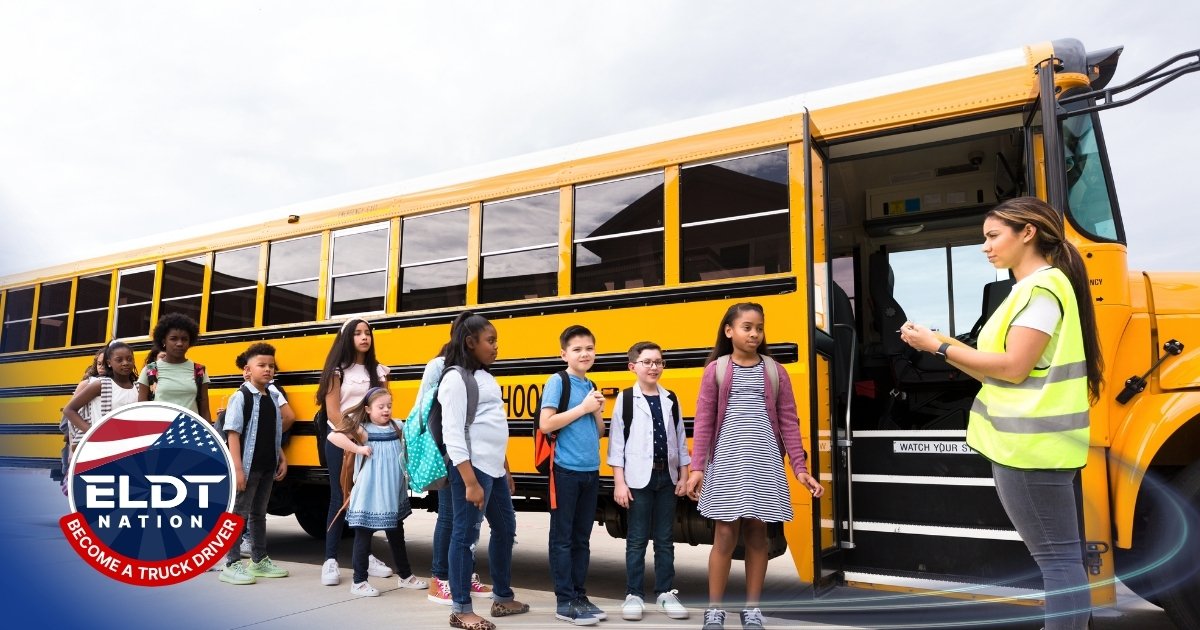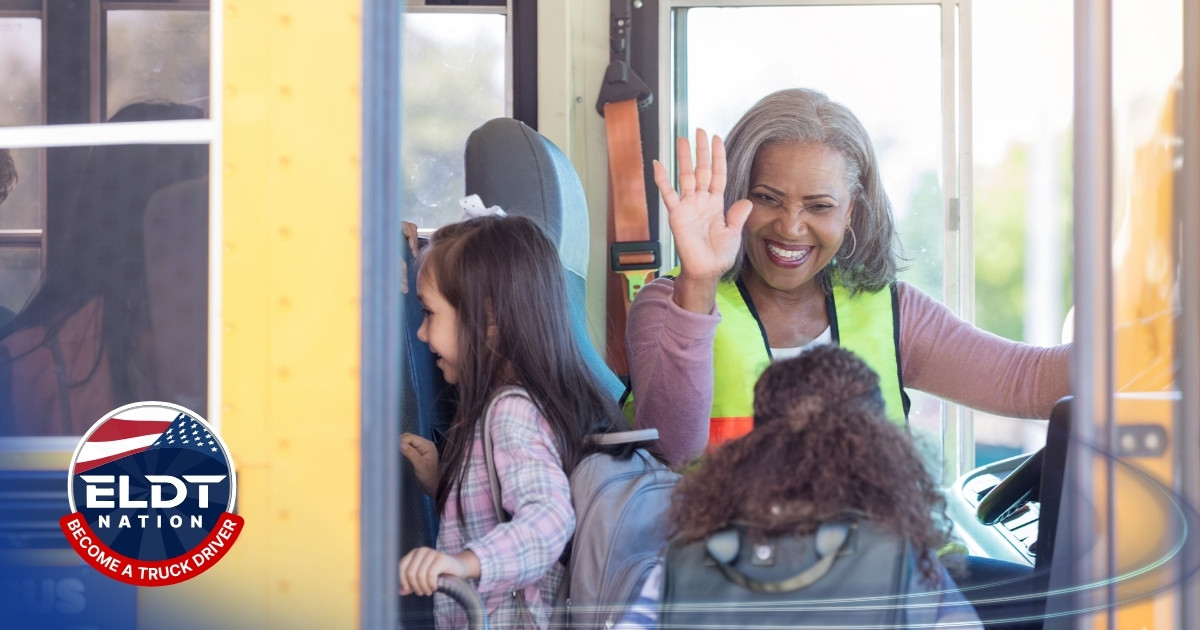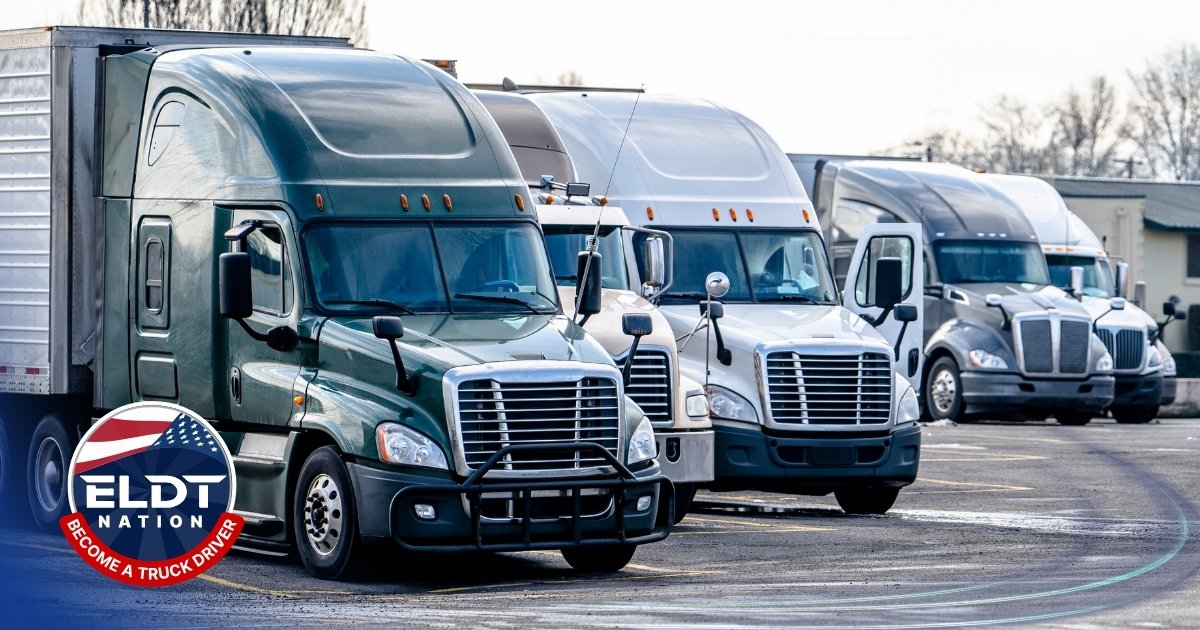Do You Need a CDL to Drive a School Bus?
The question of whether you need a Commercial Driver’s License (CDL) to drive a school bus is one of the most common licensing concerns in the United States. It is asked not only by people who want to become professional school bus drivers but also by individuals who may need to move or transport empty buses. For example, delivery drivers who take buses from manufacturers to dealerships often wonder if the rules still apply when there are no passengers on board. Similarly, substitute drivers, mechanics, or even volunteers may question whether the requirements change based on circumstances.
Federal Regulations Explained (§383.3 Applicability)
Overview of FMCSA Guidance
The Federal Motor Carrier Safety Administration (FMCSA) establishes nationwide standards for commercial driver licensing through Part 383 of Title 49 in the Code of Federal Regulations (CFR). Section §383.3 defines the scope and applicability of CDL requirements, setting clear rules for which vehicles require a CDL.
The regulations state that anyone who operates a commercial motor vehicle (CMV) in interstate, intrastate, or foreign commerce must hold the proper CDL, with limited exemptions. School buses, because of their size and passenger design, fall squarely under these rules.
The regulations were designed to ensure that drivers of passenger-heavy vehicles are properly trained, even when no passengers are present. This eliminates loopholes where unqualified drivers could legally operate buses just because they are empty.
Highlight from FMCSA-CDL-383.3-Q9
The FMCSA has issued specific guidance to address a commonly asked question:
Question 9: Do the regulations require that a person driving an empty school bus from the manufacturer to the local distributor obtain a CDL?
FMCSA Answer: Yes. Any driver of a bus that is designed to transport 16 or more persons, or that has a GVWR of 26,001 pounds or more, is required to obtain a CDL in the applicable class with a passenger endorsement. This includes drivers transporting empty school buses on a public highway.
This guidance removes any doubt. The rule applies even when the bus is empty, and even if the driver is not transporting children at that moment. The design of the vehicle is the deciding factor, not its current load.
Why Design Determines CDL Requirement
The reasoning behind this is straightforward:
- Safety Considerations – The skills required to operate a 26,000+ pound vehicle or a 40-foot passenger bus are the same whether it is empty or full.
- Consistency in Regulation – The FMCSA wants uniform standards. Without this rule, states and drivers could argue different interpretations depending on circumstances.
- Risk Factor – An empty bus is still a large, heavy, and complex vehicle that poses risks on public highways.
This is why FMCSA guidance is so strict: if the vehicle is designed for high passenger capacity or exceeds the GVWR threshold, a CDL is required every time it is driven.
Types of Licenses Required for Driving a School Bus
Not all school buses fall into the exact same category. The type of license and endorsements you need depends on the size, weight, and purpose of the bus.
CDL with Passenger (P) and School Bus (S) Endorsements
For full-size school buses—the classic yellow buses that carry dozens of children—drivers must hold:
- A CDL in the appropriate class (A or B) depending on the weight and configuration of the bus.
- A Passenger (P) endorsement, which certifies that the driver is trained and tested to carry passengers safely.
- A School Bus (S) endorsement, which covers unique aspects of transporting school children, including emergency procedures, student behavior management, loading and unloading, and safety checks.
This requirement applies to any bus designed to carry 16 or more people (including the driver) OR any bus with a GVWR of 26,001 pounds or greater.
In practice, this covers almost every standard school bus in the U.S.
Non-CDL School Bus Licenses (State Variations)
Some smaller buses, often referred to as “Type A” buses or minibuses, fall below the 26,000-pound threshold and may not trigger full CDL requirements. However, states still impose additional licensing for these cases.
For example, in Missouri (RSMo 302.010):
- A Class E driver’s license with a School Bus (S) endorsement is required for anyone driving a school bus under 26,000 pounds GVWR who is compensated for transporting school children.
Other states have similar categories, sometimes referred to as a “non-CDL school bus license.” These are designed to cover smaller vehicles while still ensuring the driver has proper training and background checks.
State-Specific Nuances
While federal law establishes the baseline, each state’s Department of Motor Vehicles (DMV) or equivalent authority has the right to add stricter rules. For instance:
- Some states require additional background checks beyond the federal requirements.
- Others mandate medical certifications, fingerprinting, or more frequent renewal for school bus drivers.
- A few states extend the “school bus endorsement” rules even to certain vans used by school districts.
This means that while the federal threshold is consistent nationwide, drivers must always verify their own state’s specific licensing rules to ensure compliance.

What Is a CDL and Why It Matters for School Bus Drivers
Definition of a CDL Under FMCSA
A Commercial Driver’s License (CDL) is a special license required to operate large or complex commercial vehicles in the United States. The Federal Motor Carrier Safety Administration (FMCSA) oversees the rules that apply nationwide, though individual states administer the actual testing and licensing.
The CDL system was created to ensure that drivers handling heavy, large, or passenger-carrying vehicles meet higher safety and training standards than ordinary drivers with a standard driver’s license. Operating a commercial vehicle requires more knowledge, stronger control skills, and a deeper understanding of safety regulations.
Federal Rules on CDL Applicability
Under 49 CFR §383.3, a CDL is required when operating:
- Any vehicle designed to transport 16 or more passengers, including the driver.
- Any vehicle with a Gross Vehicle Weight Rating (GVWR) of 26,001 pounds or more.
This rule applies regardless of whether the vehicle is loaded with passengers or cargo. The design capacity and weight rating are what matter—not the actual load at the moment of driving.
Why School Buses Almost Always Require a CDL
When you think about school buses, they nearly always fall into one or both of these categories:
- Passenger capacity: Full-sized school buses are designed to carry more than 16 passengers.
- Weight rating: Most standard school buses have a GVWR that exceeds 26,001 pounds.
Because of this, the vast majority of school buses legally require the driver to hold a CDL with the appropriate endorsements. Even smaller buses that fall under 26,000 pounds often still require special state-issued licenses and endorsements if they are used for transporting children.
This makes the CDL not just a legal requirement but also a fundamental qualification for safety. Transporting children is a responsibility that requires specialized training, and the CDL system ensures that only properly trained and certified individuals can take on that role.
Endorsements You Must Have to Drive a School Bus
Endorsements are special qualifications added to a CDL that indicate the driver has received additional training and passed specific exams for certain types of vehicles or cargo. For school bus drivers, two endorsements are non-negotiable, while others may be pursued for broader career opportunities.
Passenger (P) Endorsement
The Passenger endorsement (P) is mandatory for any driver who operates a vehicle designed to carry passengers. To obtain this endorsement, drivers must:
- Pass a written knowledge test on passenger safety, vehicle operation, and emergency procedures.
- Complete a skills test in a passenger-carrying vehicle.
This endorsement ensures the driver understands how to safely load, transport, and unload people. In the case of school buses, this endorsement certifies that the driver has the foundational skills necessary for carrying children or adults.
School Bus (S) Endorsement
The School Bus endorsement (S) is specifically designed for the unique challenges of transporting school children. In addition to the passenger knowledge and skills required for the P endorsement, the S endorsement requires additional testing on:
- Student safety procedures – including proper boarding and exiting protocols.
- Emergency evacuation – how to safely remove students during emergencies such as fire or accident.
- Stop laws – rules for using stop arms, flashing lights, and coordinating with other vehicles on the road.
- Student management – understanding the legal and safety responsibilities for maintaining order and protecting children on the bus.
The S endorsement reflects the fact that transporting children is not the same as transporting adult passengers. The driver must be prepared for the responsibility of ensuring safety during the entire transport process, from pickup to drop-off.
Additional Endorsements That May Apply
Although not typically required for school bus drivers, other CDL endorsements can enhance a driver’s qualifications and career opportunities:
- Hazardous Materials (H or Hazmat) Endorsement: Rarely needed for school bus driving, but some school districts also operate vehicles that transport fuel or maintenance materials. Having a Hazmat endorsement can improve career versatility.
- Air Brakes Restriction Removal: Many school buses use air brake systems. Drivers must pass an additional air brakes test; otherwise, they may receive a CDL with an “L” restriction prohibiting air brake operation.
While the P and S endorsements are mandatory for most school bus drivers, pursuing additional endorsements can make a driver more employable in broader commercial driving roles.

How to Get Your CDL with School Bus Endorsements
Becoming a school bus driver requires more than simply applying for a CDL. Because of the additional responsibility involved in transporting children, drivers must go through a structured process that includes training, testing, and obtaining endorsements. Below is a detailed, step-by-step guide.
Step 1: Complete Entry-Level Driver Training (ELDT)
As of February 7, 2022, the FMCSA requires all new CDL applicants and endorsement seekers to complete Entry-Level Driver Training (ELDT). This requirement applies to:
- First-time Class A or Class B CDL applicants.
- Anyone upgrading an existing CDL (e.g., Class B to Class A).
- Drivers seeking a Passenger (P) endorsement or School Bus (S) endorsement.
What ELDT Includes:
- Theory Instruction (classroom or online): Covers federal safety rules, vehicle operation principles, defensive driving, and knowledge of regulations.
- Range Training (closed course practice): Focuses on basic control skills such as turning, backing, parking, and using mirrors.
- Public Road Training: Prepares the driver to operate safely in traffic, including lane management, speed control, and interaction with other vehicles.
You cannot move forward to CDL testing without first completing ELDT with a provider listed on the FMCSA Training Provider Registry (TPR).
Step 2: Pass Written Knowledge Tests
After ELDT, you must pass a series of written knowledge tests administered by your state DMV. These tests ensure that you understand the rules of the road and the specific requirements of driving a school bus.
Required Tests for School Bus Drivers:
- General Knowledge Test – mandatory for all CDL holders.
- Passenger (P) Endorsement Test – covers passenger safety, emergency exits, vehicle inspections, and boarding/unloading.
- School Bus (S) Endorsement Test – focuses on school bus-specific issues, including student management, stop arm laws, railroad crossing procedures, and evacuation.
A minimum passing score of 80% is required in most states. Once you pass, you receive a Commercial Learner’s Permit (CLP), which allows you to practice driving with a qualified CDL holder.
Step 3: Complete Behind-the-Wheel Training with a Registered Provider
After passing the written tests, you must complete hands-on driving instruction. This is where classroom knowledge is put into practice.
Behind-the-Wheel Training Includes:
- Pre-Trip Inspections: Checking brakes, mirrors, lights, emergency exits, and safety equipment.
- Basic Vehicle Control: Maneuvers like turning, backing, lane changes, and proper use of mirrors.
- On-Road Driving: Driving in real traffic situations, handling intersections, using school bus stop signals, and following state and federal safety laws.
This training must also be provided by an FMCSA-approved school listed on the Training Provider Registry.
Step 4: Pass the State CDL Skills Exam
Once training is complete, you must pass the CDL skills test, which consists of three main parts:
- Pre-Trip Inspection Test – Demonstrating knowledge of the bus’s safety systems.
- Basic Controls Test – Proving the ability to maneuver the bus in tight spaces (backing, offset backing, parallel parking).
- Road Test – Driving in real traffic conditions, showing you can handle turns, lane changes, student pick-up and drop-off procedures, and emergency stops.
If you pass, your state DMV will issue your CDL with the Passenger (P) and School Bus (S) endorsements.
Step 5: Get Endorsements Officially Added to Your CDL
After successfully completing the exams, the final step is having your endorsements formally added to your CDL. This makes it legal for you to operate a school bus carrying students.
Endorsements are listed directly on your CDL, and employers will verify that both P and S endorsements are present before allowing you to drive.
ELDT Requirements for School Bus Drivers
What Is ELDT?
Entry-Level Driver Training (ELDT) is a federally mandated program introduced in February 2022. It was designed to standardize training for all new CDL applicants across the United States. Prior to this law, training requirements varied significantly by state, creating inconsistencies in driver preparedness.
Now, all CDL applicants—including school bus drivers—must complete ELDT with a provider registered in the FMCSA Training Provider Registry (TPR).
What ELDT Covers for School Bus Drivers
The ELDT curriculum is comprehensive and tailored to the type of CDL and endorsements sought. For school bus drivers, training focuses on:
- Vehicle Inspection – Learning how to conduct detailed pre-trip, en-route, and post-trip inspections.
- Safety Procedures – Federal and state safety regulations, including stop arm use and emergency exits.
- Passenger Handling – Boarding and unloading procedures, managing student behavior, and ensuring compliance with safety belts or seating.
- Emergency Protocols – Railroad crossing procedures, evacuation drills, and response to accidents or breakdowns.
- Basic Vehicle Operation – Shifting, braking, steering, and use of air brakes (if applicable).
How ELDT Is Delivered
ELDT training has two primary components:
- Theory Training (Online or In-Person):
- Can be completed through an online provider such as ELDT Nation.
- Includes interactive videos, quizzes, and instructor-led lessons.
- Flexible, self-paced options make it easier for drivers with busy schedules.
- Behind-the-Wheel Training (In-Person Only):
- Conducted at a registered CDL training school or bus company.
- Involves hands-on practice with the actual vehicle type.
- Cannot be substituted with online training.
Once both parts are completed, the provider reports your results directly to the FMCSA Training Provider Registry. Only then are you eligible to take the official CDL skills exam in your state.
Start Your Journey with ELDT Nation
Why Choose ELDT Nation?
If you’re ready to take the next step toward becoming a licensed school bus driver, you’ll need to complete FMCSA-approved Entry-Level Driver Training (ELDT). That’s where ELDT Nation comes in.
- Fast and Convenient – Learn at your own pace with online modules accessible from your computer, tablet, or phone.
- 100% FMCSA Approved – ELDT Nation’s courses are recognized in all 50 states and automatically reported to the FMCSA Training Provider Registry.
- Comprehensive and Engaging – Interactive videos, quizzes, and real-world scenarios make learning both effective and practical.
- Trusted by Thousands – Over 8,000 students have successfully completed their CDL training through ELDT Nation.
With ELDT Nation, the process is simpler, faster, and more flexible than ever before. Your career in safe and professional driving starts here.

![List of 10 Top Trucking Companies in the US [+Details]](https://cdn.prod.website-files.com/67d12c81bfd50e1239d7b0ff/691fff6668348073f5d2ff2a_List%20of%2010%20Top%20Trucking%20Companies%20in%20the%20US%20%5B%2BDetails%5D.jpg)





